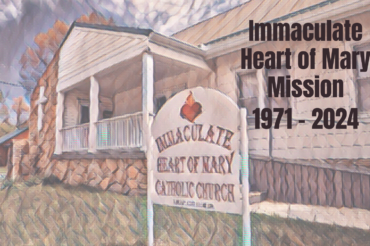Our Catholic Infrastructure
“How shall I make a return to the Lord for all the good he has done for me?” Ps 116:12
At the national level, there is a lot of discussion about maintaining and investing in our infrastructure—those things that enable us to function through communication, commerce, resources and transportation: bridges, dams, roads, railways, utilities and the like. These are the essential things we often don’t notice and even take for granted until they are interrupted or taken away. We have all experienced the frustration of even a few hours without electric power, or the closure of a busy highway. The maintenance and upkeep of these essential structures is wise.
The same is true for what I call our “Catholic Infrastructure” that enables us as a Church to carry on our life and mission as a family of faith. Not bridges, utilities and highways, but the offices and services that function as a kind of “bridges, highways and utilities” in our life together as a Church. These fit and serve our Catholic identity as a local Church (called a diocese) led by its bishop and a college of priests (known as a presbyterate) which serves a specific geographic territory made up of communities of the faithful (called parishes). The Catholic Church is not congregationalist, in which every community is autonomous, but instead is a communion of parishes in a communion of local Churches (dioceses) under the authority of the pope as the successor of Saint Peter. This Catholic structure emerged early in the life of the Church, and elements can be seen in the New Testament.
For us to function as a diocese there is an on-going need to maintain and enhance an “infrastructure” so that the life and mission of our Church can continue. This infrastructure enables our parishes and schools to be supported in the various dimensions of Church life. Some of this is very visible, such as our Catholic Schools Office, our Office of Family Life, our Vocations Office, just to mention a few. Other parts of our infrastructure are more hidden but just as essential, such as our Diocesan Office of Finance, the Office of Stewardship and Development, and our Property and Construction Management Office. Each of these offices are an extension of the Office of the Bishop, which is essential for every diocese. This includes my pastoral visits and unique responsibilities here, but also my connection with the other dioceses as well as the Universal Church. This is what I mean by our Church infrastructure.
On the weekend after next, at the Masses on October 21-22, our diocese will kick off our Annual Catholic Appeal (ACA). This is the annual opportunity to support our Church and its essential “infrastructure.” In the next week or so you will be receiving more information by mail about this year’s appeal and how you can participate.
The theme of this year’s ACA is taken from Psalm 116:12, “How shall I make a return to the Lord for all the good he has done for me?” It is a fitting theme for us who have been blessed with many gifts from the Lord, and an opportunity for us to give back to the Lord so that the work of the Kingdom of God may continue here in northern and western Missouri.
Thank you for making the work and the mission of the Church possible. Thank you for investing in our Catholic infrastructure!
+ Bishop James V. Johnston, Jr.
Catholic Key, October 13, 2017 issue





